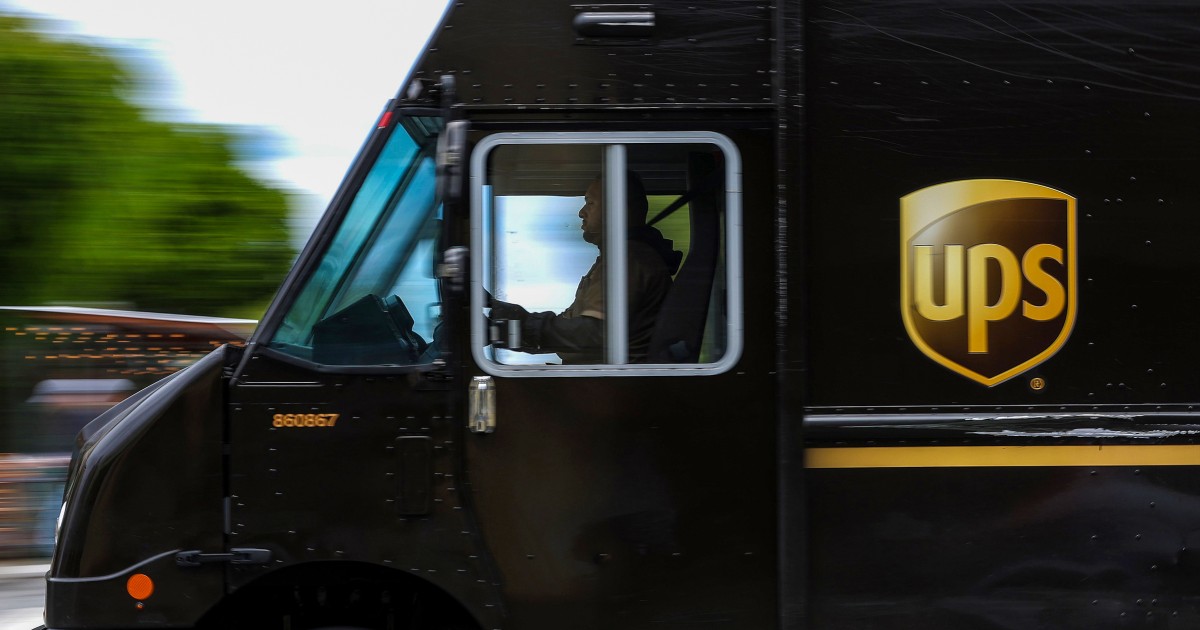UPS Faces Tumultuous Shift: 15% Share Plunge Amid Amazon Delivery Cuts
In a surprising turn of events, UPS shares have plummeted 15% following disappointing guidance and a drastic reduction in Amazon deliveries by over 50%. This pivotal decision raises questions about the future of UPS and its partnership with the e-commerce giant. Understanding this shift is crucial for investors, customers, and industry analysts alike, as it may have far-reaching implications for logistics and e-commerce.
The Impact of Amazon’s Reductions on UPS
Amazon has long been a significant client for UPS, contributing a substantial portion of the package delivery giant’s revenue. The recent announcement of a reduction in Amazon deliveries by over 50% has sent shockwaves through the logistics sector. This decision is particularly alarming given that Amazon accounted for roughly 11% of UPS’s total revenue in the previous fiscal year. With such a large slice of its revenue on the line, a significant cut will undoubtedly challenge UPS’s financial stability.
UPS’s shares declined sharply as investors reacted to Amazon’s delivery cuts. The sudden drop in share price indicates a lack of confidence in UPS’s ability to adapt to this new reality and maintain profitability. Furthermore, the company’s disappointing guidance for the upcoming quarters has compounded concerns about its financial outlook.
Why Did Amazon Cut Deliveries?
The reasons behind Amazon’s drastic decision to reduce its deliveries through UPS are multifaceted. Here are some key factors:
- Increased Self-Reliance: Amazon has been investing heavily in its logistics network, including its own delivery fleet. The company aims to reduce its dependency on third-party carriers like UPS and FedEx.
- Cost Management: In a challenging economic environment, Amazon is likely seeking to cut costs wherever possible. Reducing reliance on UPS could be a strategic move to enhance profit margins.
- Market Competition: The increasing competition in the e-commerce space has prompted Amazon to streamline its operations and take more control over its delivery processes.
What This Means for UPS Going Forward
The 15% share plunge signals a tumultuous period ahead for UPS. To navigate these turbulent waters, the company must implement strategic adjustments. Here are several potential pathways:
1. Diversification of Client Base
One immediate strategy for UPS is to diversify its client base. The company should actively seek to expand its customer portfolio beyond Amazon. This could involve targeting small and medium enterprises (SMEs) that require reliable logistics solutions. By cultivating relationships with a broader range of businesses, UPS can mitigate the financial impact of losing Amazon as a major client.
2. Investment in Technology
UPS has always been at the forefront of logistics technology. To stay competitive, further investments in automation, drone delivery, and AI-driven logistics solutions could enhance operational efficiency and cost-effectiveness. Such advancements not only improve service quality but also position UPS as a leader in the evolving logistics landscape.
3. Enhancing Customer Experience
As competition intensifies, providing an exceptional customer experience is crucial. UPS can leverage data analytics to better understand customer needs and preferences, allowing them to tailor their services accordingly. Improved tracking systems, faster delivery options, and personalized logistics solutions will help retain existing customers and attract new ones.
Long-Term Implications for the Logistics Industry
The fallout from UPS’s share plunge and Amazon’s delivery cuts may have broader implications for the logistics industry as a whole. As major players like Amazon invest in their logistics capabilities, traditional carriers may face increased pressure to innovate and adapt. This evolving landscape could lead to:
- More Competition: As companies like Amazon expand their logistics networks, they may become formidable competitors to UPS and FedEx, which could lead to a more competitive pricing environment.
- Collaboration and Partnerships: To survive, traditional carriers might seek partnerships with smaller logistics firms or invest in technology startups that can offer innovative solutions.
- Shifts in Employment: As automation and technology become more prevalent, the nature of jobs in the logistics sector may change. Workers may need to adapt by acquiring new skills to stay relevant.
Investor Sentiment and Market Reactions
The immediate reaction from investors following the news has been one of trepidation. The sharp decline in UPS’s share price highlights a broader concern regarding its future profitability. However, it’s important to recognize that market reactions can often be knee-jerk responses to news rather than reflective of long-term value. Investors should consider the company’s underlying fundamentals and potential for recovery.
While the current outlook seems daunting, UPS has weathered storms before. The company has a robust history of resilience and adaptability. If it can pivot effectively in response to these changes, there may still be opportunities for growth and stabilization in the long run.
Conclusion: Navigating Uncertainty with Optimism
The tumultuous shift in UPS’s market position, marked by a 15% plunge in share price and substantial Amazon delivery cuts, presents significant challenges for the logistics giant. However, it also opens the door for innovation, diversification, and strategic partnerships. By focusing on enhancing customer experiences, investing in technology, and broadening its client base, UPS has the potential to emerge stronger from this upheaval.
As the logistics industry evolves, traditional carriers must adapt to the new realities of e-commerce and delivery. The road ahead may be rocky, but with a proactive approach and an eye on the future, UPS can navigate these turbulent waters and continue to play a critical role in the logistics ecosystem.
See more Business Focus Insider Team

